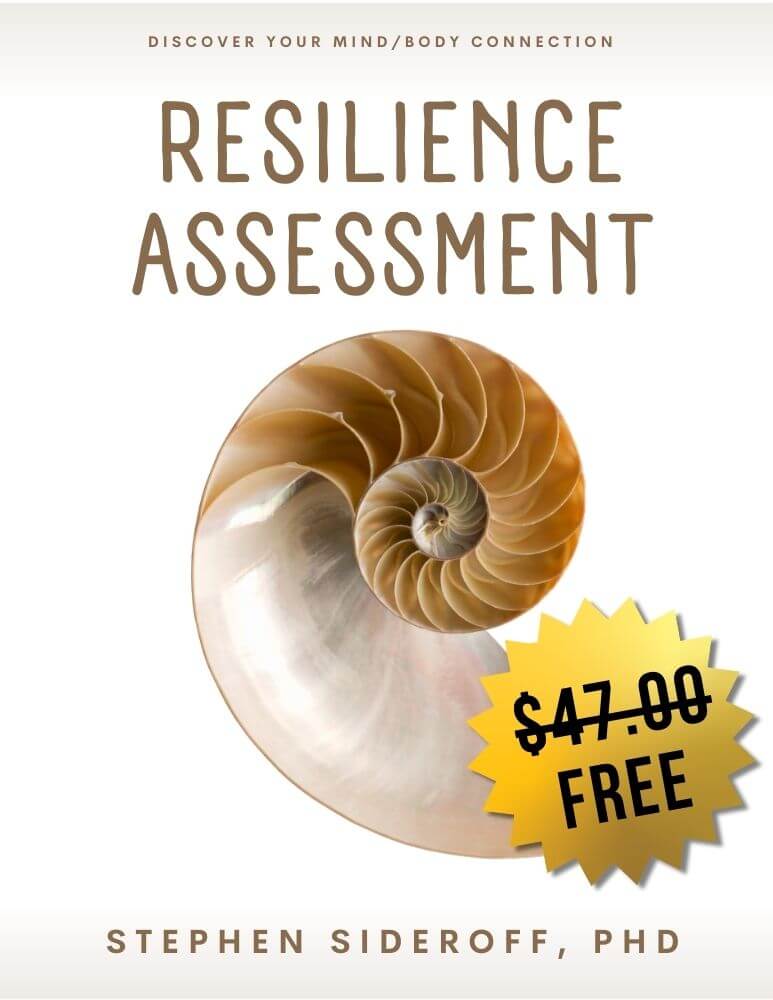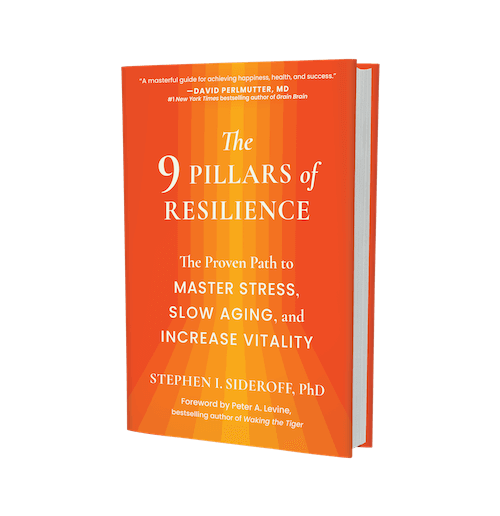Resilient Recovery: Importance of establishing self-regulation abilities within addiction treatment and recoveryAuthor: Stephen Sideroff/Monday, April 7, 2014/Categories: Emotional HealthI believe a common denominator underlying addiction is either the loss of or lack of ever establishing good physiological self-regulation. This impairment sets the stage for addiction vulnerability, makes treatment difficult and once abstinence is established, leaves the addict vulnerable to relapse.
Self-regulation, stress and life-threat
Self-regulation is all organisms’ instinctual but developed biological process. Sometimes referred to as homeostasis it refers to the primary survival goal of keeping all physiological systems in balance. To accomplish this, our bodies have elaborate sensing mechanisms that detect when a system is out of balance and automatically trigger interventions to restore that balance. The developmental mechanisms for the establishment of self-regulation occur during the mother-child bonding and attachment process. The mother-child dyad becomes a training ground in which the infant’s nervous system is actually regulated and developed through arousal modulation by the mother’s facial expressions, movement, sounds and even breathing pattern. We can say that the child’s nervous system is tuned by (or attuned) to the mother. To the extent that the mother is tense, anxious, depressed or angry, the child’s physiological mechanisms for restoration and calming will be impaired. In fact, impairment of this process has been shown to result in less-effective emotional regulation, less social competence and deficiency in dealing adaptively with stressful experiences.
Our stress response is our most important survival mechanism, helping us regulate with the outside world. It fires in response to the detection of danger, threat or any significant uncertainty, mobilizing us to address the danger. There are more than 1,400 biochemical changes that occur during this response.
Organized by the hypothalamic-pituitary-adrenal axis, the stress response activates the sympathetic branch of the autonomic nervous system, which includes our cardiovascular, neuromuscular and neuroendocrine systems. Simultaneously, the gastrointestinal and reproductive systems and regulation of our internal environment shut down. As Robert Sapolsky of Stanford says, “If you are trying to avoid being lunch for a tiger, you aren’t thinking about your own dinner – or reproduction!”
We deplete the resources of our body and cause strain to various systems, such as the neuromuscular system, during these stress responses. Since our body always wants to maintain homeostasis, then, the body must engage the parasympathetic branch of the nervous system to kick in natural reserves to sustain us.
For example, the vagus nerve helps to regulate heart rate by functioning like a brake. When the brake is removed, the lower vagal tone enables the heart to beat faster. Conversely, in its functional state, it serves to slow down the heart, thus facilitating calm. Through the balanced interaction of these two branches of the nervous system, the body is able to maintain self-regulation.
In more recent years a second and more primitive survival mechanism has been elucidated through the pioneering research of Stephen Porges. Sometimes referred to as the freeze response, it is triggered under more extreme circumstances of life threat and inescapable danger. Simply, this is when the body immobilizes. This unique physiological state is referred to as an automatic immobilization shutdown strategy and is potentially lethal.
Porges has developed the Polyvagal theory in which he proposes two distinct vagal systems. One of these systems mediates respiratory sinus arrhythmia, which involves the calming and balancing mechanisms of the nervous system. The other is the involvement of the immobilization response that causes bradycardia and apnea. This latter mechanism, the more primitive survival response, is helpful for reptiles but can be potentially lethal in mammals and is the mechanism common seen in trauma. The establishment of this trauma response makes it difficult, subsequently, to maintain autonomic and homeostatic balance.
Furthermore, Porges describes the process of neuroception, an unconscious mechanism of our nervous system that detects and responds to danger. Once trauma has set in, the traumatized patient is subject to the unconscious and automatic triggering of this defensive shutdown mechanism to multiple environmental stimuli.
We are all challenged due to the imbalance between stimuli and events that trigger the stress response, as compared to those that trigger the opposite, or recovery response. In fact, think of all the times in your day where there is danger, threat or uncertainty. Yet most of us are hard-pressed to think of even a few situations in our life that trigger safety and relaxation.
Psychological factors exacerbate this imbalance. The need to be liked or to be perfect, or the fear of rejection and difficulty saying no all contribute to the triggering of the stress response too frequently and too intensely, while self-judgment extends the response well past the actual stressful situation.
Childhood self-regulation challenges in addicts
Based on this information, there are two broad areas in which the childhood of an addict sets the stage for dysregulation and vulnerability to addiction. The first is the consequence of the impairment of the mother-child dyad. This results in a child with a poorly developed healthy restorative mechanism within his nervous system.
Secondly, when an addict comes from a childhood of danger, trauma and uncertainty, this unsafe childhood has a lasting impact from both a psychological and a physiological perspective. At any given moment, every organism can either be in a defensive mode or a developmental/growth mode – but not both. Therefore a child who is continually in defense mode will have impaired development and growth.
More specifically we see decreases in neural connections and impairment in the pre-frontal cortex, which plays a key role in regulation of the Hypothalamic-Pituitary-Adrenal axis. Since most of the activity in this part of the brain is inhibitory in nature, there is also a loss of control over the limbic structures involved in emotional responses, resulting in greater emotional reactivity. At the same time there is the development of a hypersensitivity of the hypothalamus, the amygdala and the motor system. These developmental changes make self-regulation and the ability to feel comfortable and calm much more difficult. These individuals are unable to experience a sense of “home” in their bodies.
Another area of the brain that is affected is the hippocampus, which serves to push the breaks on the stress response – it lets us chill out. Chronic stress leads to atrophy and dysfunction in this area of the brain, resulting in less dampening of the stress response. The hippocampus is also important in the process of neurogenesis, or the birthing of new nerve cells. Research has shown that excessive drug use, such as binge-drinking, leads to a decrease in neurogenesis through a decrease in neural stem cell proliferation and newborn cell survival.
Another consequence of this sort of childhood history is the reduced ability of the brain structure to release dopamine, which impacts pain modulation and prohibits an optimally functioning reward system. Without a healthy reward system, vulnerability increases as do cravings for drugs that trigger dopamine release.
So we can say that this drug-seeking behavior acts as self-medication and an unconscious drive for what the brain has lost the capacity to do itself. Since cortisol, which is released during the stress response, facilitates the release of dopamine, it might also be a factor in stress-seeking behaviors in this population.
This population has difficulty restoring physiological baseline after any stressful event. So when there is a stressful event that activates and creates tension in the body, it takes much longer to restore baseline to the pre-event levels. And in some cases, it can only occur with external intervention. Good, restorative sleep also suffers, which creates the domino effect as other physical symptoms emerge from impaired sleep patterns.
Effects of stress on addiction
These factors all create a nervous system and subsequent behavior that is fertile ground for drug-seeking behaviors and craving and relapse in recovering addicts. The research demonstrates this relationship:
One additional consequence of stress and an ongoing perception of danger is that the cortex, or executive and cognitive functions of the brain tend to shut down, while the survival or lower and more primitive centers of the brain take over. When this happens, an addict will revert to older and more established coping patterns, while having less access to newer learning or the more inhibiting functions of the cortex.
Establishing self-regulation
For all these reasons, addictions professionals should focus on developing self-regulation in the person with addiction issues. The basic components of this training would include:
If we consider other aspects of addiction treatment, such as repairing attachment and other developmental impairments, it is foundational for the addict to have the ability to feel at home in his body, to experience calm and open the gateways for developmental and healing processes. Resilient Recovery
For more tools in addressing this aspect of addiction, you may want to go to my website: www.ThirdWind.org where you may find programs and CDs on resilience. In addition, my Resilience Assessment Booklet provides a quick assessment tool on my nine dimensions of resilience. His book, The Path: Mastering the Nine Pillars of Resilience and Success will be available soon. |
|
Link: http://www.recoveryview.com/Articles/TabId/107/PID/657/mcat/1131/acat/2/ArtDateMonth/4-2014/Default.aspx |
|
© Dr. Stephen I. Sideroff, PhD | September 2014 | All Rights Reserved |

How Resilient Are You?
With Dr. Stephen Sideroff's exclusive Resilience Assessment, you'll discover the secrets to your personal and professional toughness.
Fill out the form below and get the Resilience Assessment for FREE.
Bonus: Learn the secrets to becoming more resilient.
No Spam policy | We will not sell your info | Cancel Subscription Any Time

